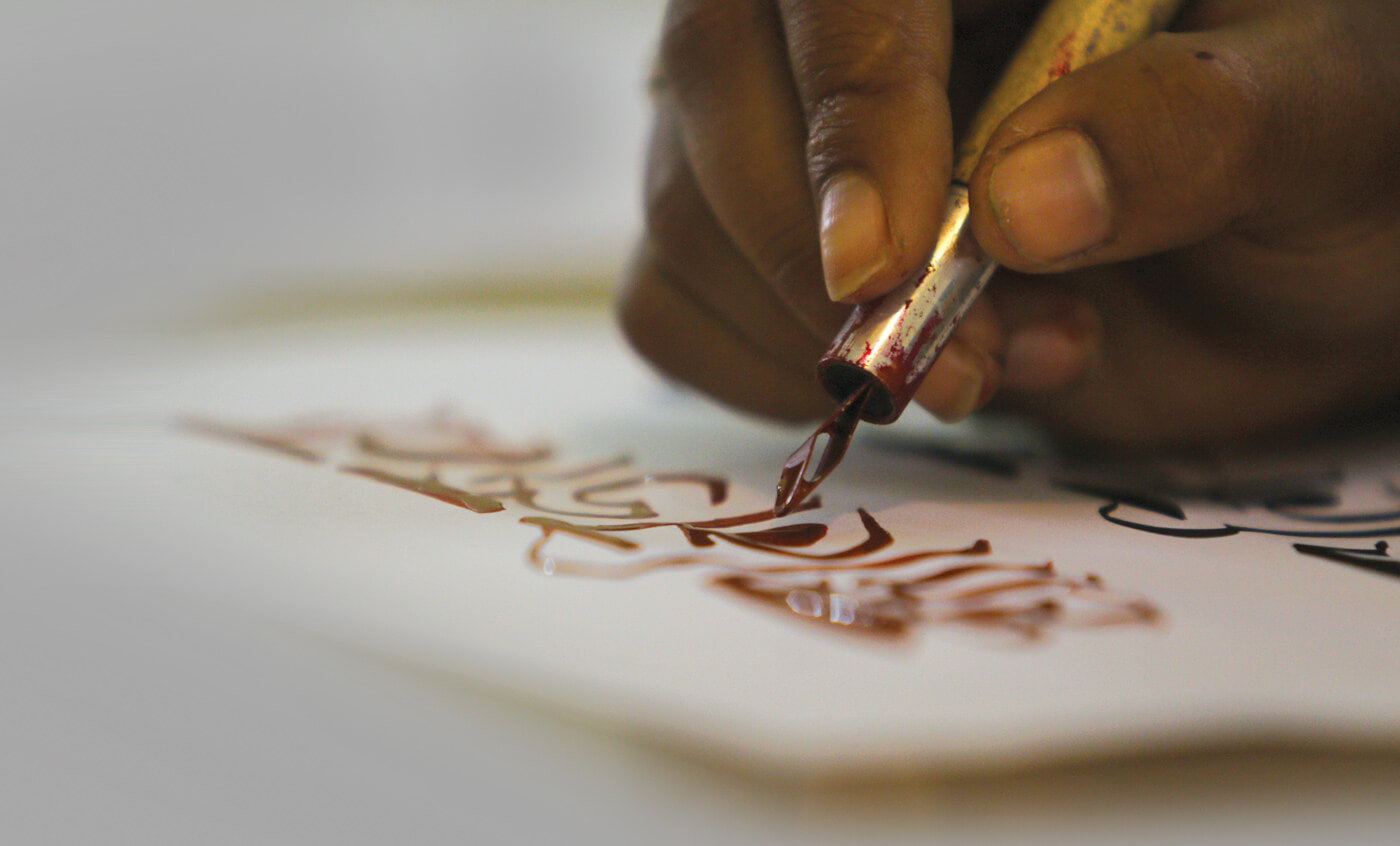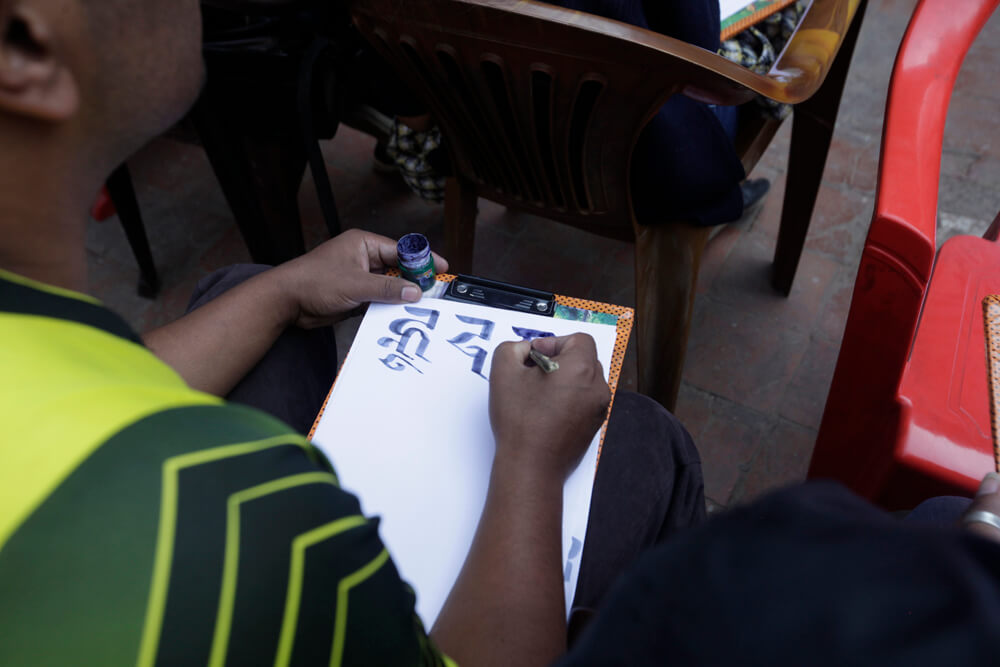Kathmandu’s Ranjana renaissance
Over the Tihar festival this month, while most people were busy worshipping crows, dogs and cows, an unusual group of people had gathered in a temple in Patan. They were not carrying marigold garlands and vermilion powder, but bamboo pens and bottles of ink.
The week of the Nepal Sambat 1139 new year was an appropriate time for another Callijatra workshop in which participants are tutored in writing the ancient Ranjana script, which originated in the Kathmandu Valley civilisation and is derived from early Lichhavi alphabets.
Read also: The script of the scriptures, Sewa Bhattarai
Ananda Kumar Maharjan was demonstrating Ranjana calligraphy and teaching a class of eager students how to write ‘nhudaya bhintuna’ (happy new year) in the ornate script of the Newar people.

Maharjan, 35, has been working as a font and graphic designer, and the idea for the calligraphy classes evolved from a Facebook group he set up three years ago. He says, “The response was so encouraging, with enthusiasts sharing their writings with the hashtag Callijatra, that we decided to expand the exercise.”
Sunita Dangol was a student who is now a tutor herself, and is encouraged that the classes are gaining popularity. At the recent Itumbahal Cultural Festival, Maharjan and Dangol set up a stall to show people how to write their names in the script.

“The calligraphy workshop was unplanned, but the response was overwhelming,” says Dangol, who went on to conduct 12 other workshops with the Nepal Lipi Guthi.
The decorative alphabet designed by Kathmandu Valley artisans was used in early scriptures, and manuscripts, and was transported north to Tibet, China, Korea and Japan in the 14th century with Arniko. Ranjana letters can be seen at the Great Wall of China, artefacts belonging to Kublai Khan, as well as in temples in Korea and Kyoto.

Maharjan says that the script spread with Mahayana Buddhism as it travelled from Nepal to Tibet and China. "The Newars were traders who crossed the Himalaya as far back as the 11th century, and the spread of Ranjana was later assisted by Bhrikuti and Arniko taking Kathmandu Valley religion, architecture and culture to China,” Maharjan explains.
Lately, young students in Kathmandu Valley have developed an interest in learning about their rich culture and heritage and Ranjana is enjoying a renaissance.

Dangol explains that Ranjana uses the Kutaksher method of vertical writing and used it as a code. “Ranjana was not just a decorative script but the flourishes served as a secret message system that was hard to understand, and even more, was hard to write.” she added.
Maharjan is now trying to design different versions of Ranjana script in a digital format. Meanwhile the Callijatra team is working on learning materials including animated videos, interactive dotted books for learning to write Ranjana for children. The team is also practicing beautification of the font and producing tutorial videos for YouTube.
Read also:
The write stuff, Shaleen Shah
Written in stone, Sartha Karki

writer




